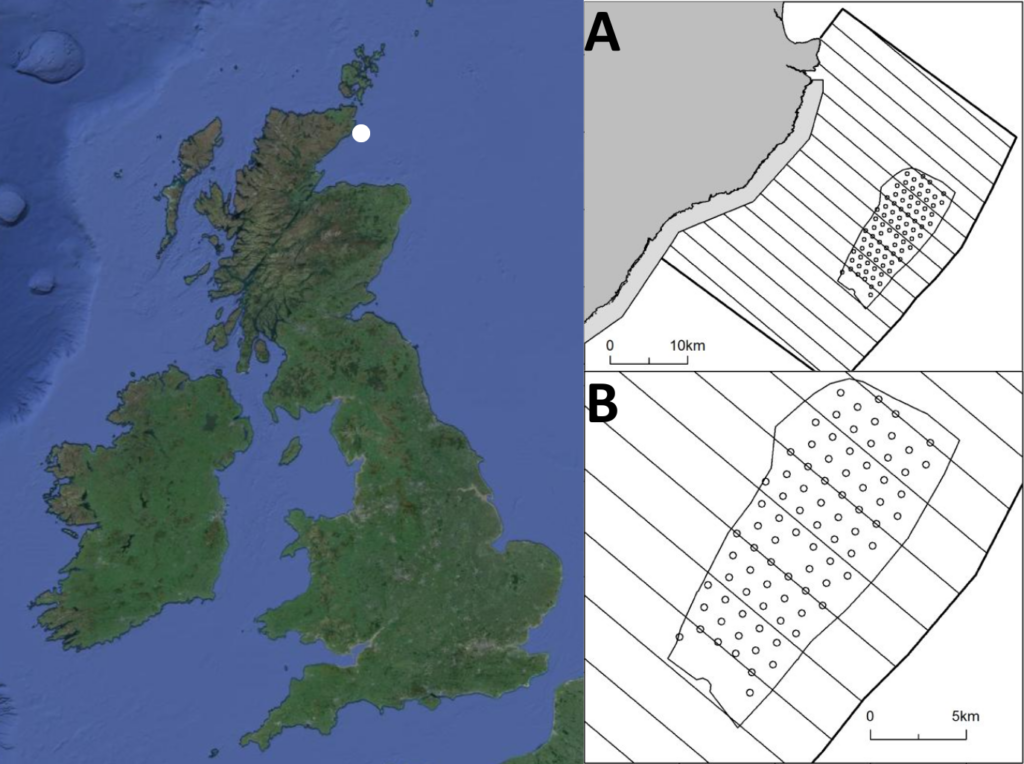Trinder, M., O’Brian, S., & Deimel, J. A new method for quantifying redistribution of seabirds within operational offshore wind farms finds no evidence of within-wind farm displacement. Front. of Mar. Sci. 11 (2024). https://doi.org/10.3389/fmars.2024.1235061
Winds of Change
Offshore wind turbine farms are rapidly expanding to meet carbon emission goals. However, the impact of these projects on the marine environment are still not fully understood. Seabirds are especially vulnerable to displacement from preferred migration routes and foraging areas by these farms.
Current Environmental Impact Assessments (EIA’s) measure impacts on seabirds via mortality and displacement. Prior studies have focused on potential bird mortality from collision with the turbine and extra energy use to avoid the wind farm. Displacement measurements have not received the same attention.
Given the highly mobile nature of birds across space and time, measuring their displacement is difficult to do. Trinder, O’Brien, and Deimel (2024) propose a new method which overcomes this issue.

Normalization
The Beatrice Offshore Wind Farm off the coast of Scotland was used to test this new method. Rather than compare bird presence before and after construction of the farm, their density was measured in proximity to the turbines. If the turbines had no impact on bird density, then their distribution would be random. If the turbines had an impact, then bird distribution would not be random.
In order to assess this, the turbines and seabirds were plotted using GPS markers during the survey. Next, researchers took the turbines and randomized their location in a computer which then measured bird distance to the new location of the turbine. After repeating this process 1,000 times, they created a normal distribution curve. Now they could analyze the original data and determine if bird distribution fell along this curve, indicating randomization. If it didn’t then that would mean the turbines were influencing their position.

New Methods, New Patterns
Five species of seabirds were present at the site including: common guillemot, razorbill, Atlantic puffin, black-legged kittiwake, and Northern gannet. Overall, turbines had no significant influence on bird distribution either on the water or flying in the air. This differs from several prior studies that reported displacement of guillemot and razorbill near the Netherlands. Different methodologies may be to blame.

Most studies use the number of birds before and after farm construction to determine displacement. However, this can lead to inaccurate results from seasonal variability and overall variability of populations between years. Not only that but this methodology requires many years of data collection before and after the project to attempt to assess any displacement.
The new methodology introduced in this paper allows seabird displacement to be measured at any time and at any established offshore wind farm. Not only does it provide flexibility to conduct the study at any time, but it can also be done in less time. Future studies should expand upon this methodology to continue to test its robustness. Therefore, comparisons between studies can be made across time and between different farms to understand larger seabird displacement patterns.
I am a recent MSc graduate in marine biology from Bangor University, where I studied population dynamics of elasmobranchs off the coast of Wales. My interests lie in ecological data analysis to understand environmental processes and identify natural patterns. However, nothing beats being in the field and interacting directly with the marine life.

